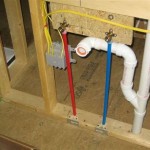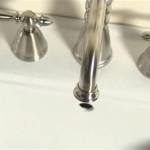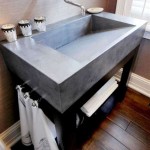How To Clean Sludge Out Of Bathroom Sink Drain Pipe
Bathroom sink drains are prone to accumulating sludge, a buildup of soap scum, hair, toothpaste residue, and other debris. This can lead to slow draining or even complete blockages. Regular cleaning is essential to maintain proper drainage and prevent unpleasant odors.
Initial Assessment and Preparation
Before attempting any cleaning method, it is important to assess the severity of the clog and prepare the area. This ensures efficient cleaning and minimizes potential mess.
- Assess the drainage speed: Observe how quickly the water drains. Slow drainage indicates a partial clog, while standing water signifies a complete blockage.
- Gather necessary supplies: Assemble tools and materials, including a plunger, a bucket, baking soda, vinegar, a drain snake, rubber gloves, and old towels.
- Protect the surrounding area: Place old towels or newspapers around the sink to catch any spills or splashes.
Using a Plunger
A plunger can be an effective tool for dislodging minor clogs near the drain opening. Proper technique is crucial for maximizing its effectiveness.
- Remove the sink stopper: Unscrew or lift out the sink stopper to expose the drain opening fully.
- Fill the sink with water: Add enough water to cover the cup of the plunger.
- Create a seal: Place the plunger cup over the drain opening, ensuring a tight seal.
- Plunge vigorously: Push and pull the plunger up and down rapidly for several minutes, maintaining the seal.
- Check the drainage: Remove the plunger and check if the water drains freely. Repeat the process if necessary.
Natural Cleaning Solutions
Natural cleaning solutions can effectively break down sludge and deodorize the drain. These methods are environmentally friendly and readily available.
- Baking soda and vinegar: Pour one cup of baking soda down the drain, followed by one cup of vinegar. The mixture will fizz, helping to loosen the clog. Let it sit for at least 30 minutes, then flush with hot water.
- Boiling water: Boil a kettle or pot of water and slowly pour it down the drain. The hot water can help dissolve soap scum and grease buildup.
Using a Drain Snake
A drain snake, also known as a plumber's snake, is a flexible tool designed to reach deeper into the drain pipe and break up or retrieve stubborn clogs. Caution should be exercised to avoid scratching the sink.
- Insert the snake: Carefully insert the end of the drain snake into the drain opening.
- Rotate and advance: Rotate the handle of the snake while advancing it further into the pipe.
- Retrieve the clog: If the snake encounters resistance, continue rotating and try to hook or break up the clog. Slowly retract the snake, cleaning any debris clinging to it.
- Flush with water: After removing the snake, flush the drain with hot water to clear any remaining debris.
Disassembling the P-Trap
The P-trap, the curved section of pipe beneath the sink, is a common location for clogs. Disassembling and cleaning the P-trap can be an effective way to remove stubborn blockages.
- Place a bucket under the P-trap: Position a bucket under the P-trap to catch any water or debris.
- Loosen the slip nuts: Carefully loosen the slip nuts connecting the P-trap to the drainpipe and the tailpiece.
- Remove the P-trap: Carefully remove the P-trap, allowing any water and debris to drain into the bucket.
- Clean the P-trap: Clean the inside of the P-trap thoroughly using a brush or cloth. Remove any clogs or buildup.
- Reassemble the P-trap: Reassemble the P-trap, ensuring the slip nuts are tightened securely.
- Check for leaks: Run water in the sink to check for leaks around the reassembled P-trap.
Preventing Future Clogs
Taking preventative measures can significantly reduce the frequency of drain clogs and maintain proper drainage.
- Install a drain strainer: A drain strainer catches hair and other debris before they enter the drain.
- Flush with hot water regularly: Periodically flush the drain with hot water to help dissolve soap scum and grease buildup.
- Avoid pouring grease down the drain: Dispose of grease and oil in a separate container, not down the sink.
- Perform regular cleaning: Implement a regular cleaning routine using natural methods or commercial drain cleaners to prevent sludge buildup.

What Is Black Sludge In A Sink Drain Birnie Plumbing Drains

How To Clear The Black Slime From Your Bathroom Sink

What Is Black Sludge In A Sink Drain Birnie Plumbing Drains

How To Clean Black Sludge In Bathroom Sink Drains Hunker Cleaning House Tips Deep

3 Ways To Clean A Bathroom Sink Drain Wikihow

How To Clear A Clogged Drain Reviews By Wirecutter

How To Clean Black Sludge In Bathroom Sink Drains Hunker Cleaning Drain

Black Stuff Coming Out Of My Sink Drain What Should I Do Mr Kitchen Faucets

3 Ways To Clean A Bathroom Sink Drain Wikihow

How To Clean Black Sludge In Bathroom Sink Drains Hunker Drain Unclog Sinks
Related Posts







